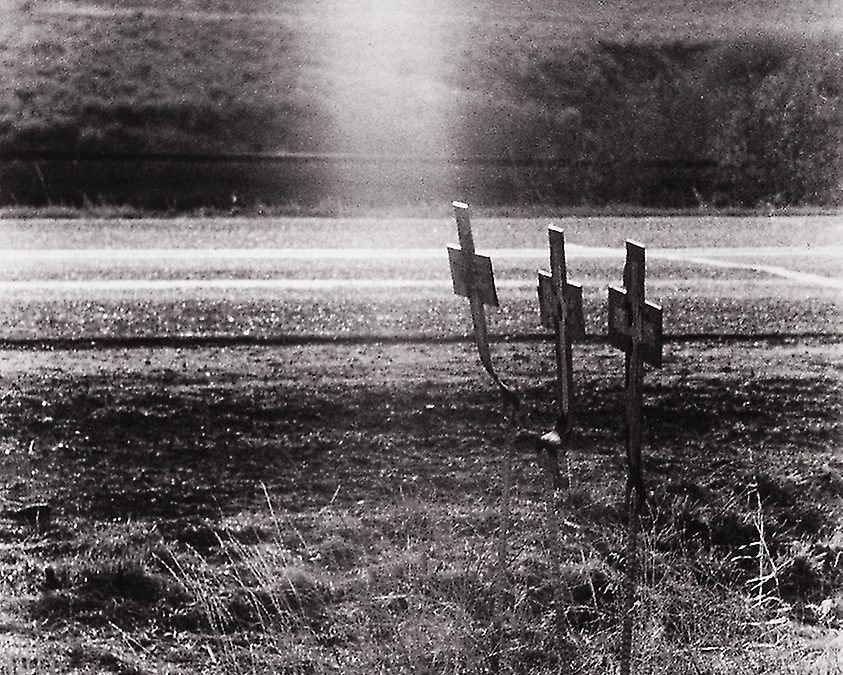If a mother or a teacher wrote a book about American history and everything you could learn driving around the country, it would bomb. Packed with goody-goody facts, it could never convey the right tone, never be cool. Did you know this? Did you know that? (said bitterly, mockingly, like a resentful fifth grader). I imagine such a book, The Purpose-Driven Vacation, and feel the sweat trickling down my armpits, the mosquitoes of annoyance biting as I trudge up and down a thousand steps to the stupid site of something that happened long ago to dead people.
Sarah Vowell, neither a mother nor a teacher but sounding at times like a mocking fifth grader, has found her calling in rejuvenating the quaint field of heritage tourism. Generation-X scamp, deadpan voice coming out of the funky radio show This American Life, and also incidentally, the disaffected daughter in The Incredibles, and—well, check out her photo—dead ringer for the girls in The Addams Family and Beetlejuice, that Sarah Vowell has written a wise and funny and inspiring book about our history called Assassination Vacation. Her trip to discover where Lincoln, Garfield, and McKinley were shot, buried, and memorialized is a search for the meaning of America.
Vowell brings her alert, funny, offbeat attention to every relic and ruin, aware that, as she quotes a friend in her previous book, The Partly Cloudy Patriot, “When you declare your genuine passion for something, you are so setting yourself up.” She tracks down the sites where a bullet changed the course of history (except in Dallas, which might have overwhelmed the book), and her fierce opinions, trove of knowledge, and droll observations make her a great traveling companion. She digs up quirky history, the fact that Robert Todd Lincoln was nearby for three assassinations “like some kind of jinxed Zelig of doom,” or that Charles Guiteau, the man who shot James Garfield, lived for years in the free-love colony of Oneida, New York, but couldn’t get laid. Her sharp eye zooms in on the last lines on an obscure plaque at 15th and F Street in D.C., on the site where, among other things, Guiteau purchased the gun he used to shoot Garfield: “Ballot initiative to preserve the building approved by Washington citizens, 1983. Razed, 1984.” Then she realizes that as she’s been scribbling, several families of tourists have crowded around to videotape whatever it is that she finds so fascinating. “This is a new development in Garfield pilgrimage—other pilgrims,” she writes coolly.
This revisiting of our history by a smart young Democrat should interest people of all parties. She keeps finding our common patriotic ground, whether she’s admiring phrases like Lincoln’s “with malice toward none” or the skills of the volunteer docents who recite history for tourists. There’s something fierce about her insistence on our ideals, in spite of our messy reality, something deep that focuses her writing and brings purpose to her playfulness.
Vowell, like most of us, is mainly mutt—part Swedish, Scottish, English, and French, but a slice of Cherokee gives her passion for this country an interesting twist. As she wrote in her 2000 book, Take the Cannoli: Stories from the New World, the Cherokee watched the new American republic take shape and embraced its ideals and institutions. The tribe established its own three-branch government, wrote a constitution, even started a newspaper. “Always a nerdy, overachiever, bookish sort of tribe,” Vowell wrote, they “married whites at a fairly fast clip.” This didn’t prevent them from being betrayed and banished, and a quarter of their people died struggling along the Trail of Tears on the forced march from the east to Oklahoma. A hundred and sixty years later, Vowell and her sister followed the trail by car, blasting a Chuck Berry tape and trying to figure out where they came from.
She doesn’t discuss her Cherokee heritage in her latest book, but it’s something to marvel about while reading Assassination Vacation. Even when her flip delivery makes her look like she couldn’t care less, she actually couldn’t care more.
[Photo Credit: Robert Frank c/o The Art Institute of Chicago]
